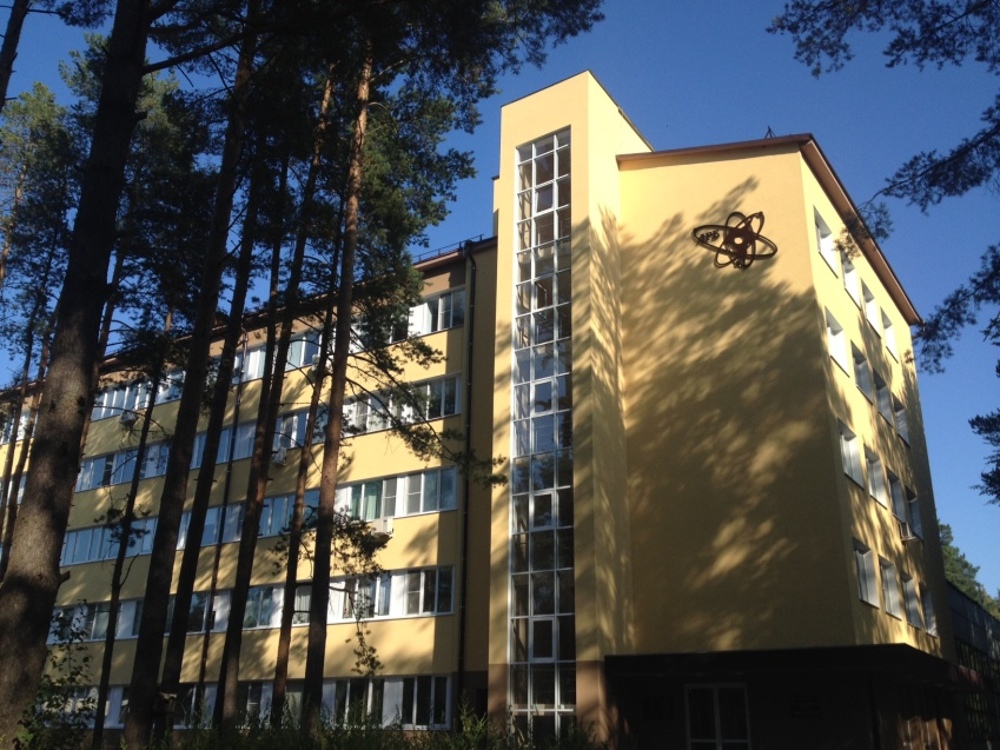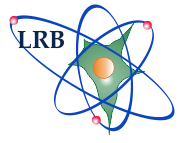
Brief history
1959. JINR's first radiobiological experiments were begun at the 5-meter proton synchrocyclotron of the Laboratory of Nuclear Problems, JINR. This research was carried out by specialists of the Radiotoxicology Group and clinicians of the Institute of Occupational Hygiene and Occupational Diseases, the USSR Academy of Medical Sciences. They performed a comparative evaluation of different proton and gamma radiation dose influence on laboratory animals. Such data were needed as the basis for the elaboration of measures against the harmful effects of corpuscular radiation on the human organism and, as a result, to work out irradiation standards for personnel working in mixed fields of ionizing radiation.
1964. A stationary laboratory attached to the Laboratory of Nuclear Problems (LNP), JINR, began to work. It was a branch of the Institute of Medical and Biological Problems (IMBP; founded in 1963), the USSR Ministry of Health. This subdivision carried out research related to the irradiation of various biological objects by different types of ionizing radiation. At the LNP synchrocyclotron, experiments were performed to study the influence of protons in the energy range of 25 to 645 MeV on different animals (rats, mice, dogs and even a monkey), plants, and cultivated cells of mammals and humans. A group of IMBP physicists extracted proton beams with different energies and performed beam dosimetry during the irradiation of biological objects. In 1966, on the initiative of V. P. Dzhelepov, the development of the USSR's first medical proton beam for treating oncological patients was started at the LNP synchrocyclotron. In 1968, radiobiological research was begun at the medical proton beam, LNP JINR, by scientists of the Oncological Centre, the USSR Ministry of Health. In a series of experiments on cell cultures and tumor-carrying animals, the main radiobiological parameters of protons with the energy of 180 MeV were determined.
1978. The Biological Research Sector was established at the LNP on the initiative of Dr. V.I. Danilov, Head of a Department at the synchrocyclotron. To be in charge of this sector, Prof. V.I. Korogodin was invited – a well-known specialist and a follower of N.V. Timofeev-Resovsky. V. I. Danilov actively developed studies of magnetic fields with different characteristics and their influence on biological objects. Biologists made up a magnetic experiment team and worked at a special order of the Ministry of Middle Mechanical Engineering (which was actually the Ministry of Nuclear Engineering). Also performed were studies of pulsed and alternating magnetic field influence on plants, bacteria, bacteriophages, human lymphocytes, and nerve cells (on mollusc neuron samples). Along with research in magnetobiology, radiobiological research was started at the JINR basic facilities under the direction of the Doctor of Biological Sciences E.A. Krasavin. Their main aim was to study the mechanisms determining the difference in the biological effectiveness of ionizing radiation with different physical characteristics.
1986 – 1988. In 1986, Dr. E.V. Krasavin became Head of the Biological Research Sector. During this period, the main task of the Sector was to study the mutagenic action of radiation with different linear energy transfer (LET) on cells with different levels of genome organization. In 1988, the Sector was reorganized into the Biophysical Department, LNP. A series of research into the mutagenic action of ionizing radiation with different physical characteristics on the cells with various level of the genetic apparatus organization was awarded JINR's First Prize.
1995. The Department of Radiation and Radiobiological Research, JINR, was founded. By that time, the Biophysics Department, LNP, had performed multi-aspect radiobiological studies at JINR's basic facilities. After the successful completion of work on accelerating heavy nuclei to relativistic energies at the synchrophasotron of the Laboratory of High Energies (LHE) and beginning physical experiments at LHE's new accelerator Nuclotron, a number of radiobiological experiments at high-energy heavy ion beams were proposed. The realization of these plans required the special spectrometric and dosimetric studies of relativistic heavy nuclei beams. The Department of Radiation Research and Radiation Protection already had ample experience in this field. The JINR Directorate – in particular, the JINR Director and Vice-Director of the time Profs. V.G. Kadyshevsky and A. N. Sissakian, respectively – supported the idea of merging LNP's Biophysics Department and JINR's Department of Radiation Research and Radiation Protection into JINR's new subdivision: the Department of Radiation and Radiobiological Research (DRRR).
2005. On the basis of the DRRR, the Laboratory of Radiation Biology was established.
|


